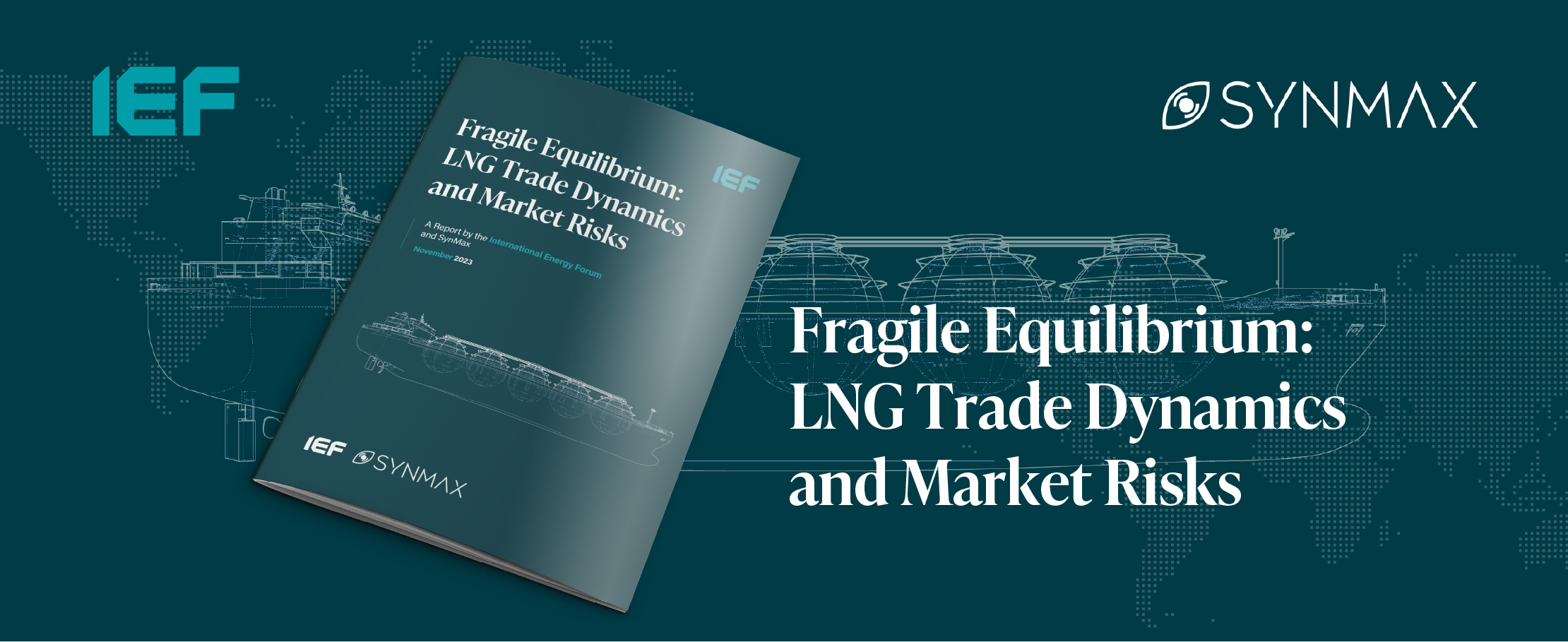Fragile Equilibrium: LNG Trade Dynamics and Market Risks
A report by the International Energy Forum and SynMax
In just over half a century, the liquefied natural gas (LNG) industry has radically transformed from its nascent stages into a globally traded energy source. LNG trade has quadrupled over the past two decades and is poised to double again in the next 20 years.
While LNG trade is becoming more liquid and inclusive, it remains disproportionately concentrated in production and consumption. Three countries - Japan, China, and South Korea – accounted for half of the world's total LNG imports in 2022. Meanwhile, another three - Qatar, Australia, and the United States - commanded a staggering 65% of global exports. Despite this stark concentration, the sector is interdependent, and supply disruptions in one corner of the globe can send shockwaves across the entire market.
One such seismic event occurred in February 2022 when Russia's invasion of Ukraine upended global energy markets. When faced with the sudden loss of Russian pipeline gas supplies, European buyers raced to procure record volumes of LNG to fill the void. Europe's surging demand propelled global LNG spot prices to unprecedented heights and created a supply squeeze for emerging economies, exacerbating a delicate situation.
Just as markets were rebalancing and readjusting to the fallout of the war in Europe, another war broke out in the Middle East following Hamas's attack on Israel on October 7th. While the impact on commodity flows is limited so far, geopolitical risk in the region has increased substantially and extends to the Strait of Hormuz, which carries 23% of global LNG flows.
Europe's natural gas inventories may be at record levels heading into winter, but there is no room for complacency. In the near term, risks abound with a potential escalation of the Israel-Hamas War, uncertain winter weather in the Northern Hemisphere, and increased risk of infrastructure sabotage. Any unexpected supply disruption could destabilize markets again.
Risks are not limited to the near term. In the long term, policymakers will have the delicate task of balancing energy security, affordability, and sustainability. Simultaneously, market players must also address and adapt to risks around chokepoints, cybersecurity, and natural disasters.
As the world moves towards ambitious climate objectives, LNG will play an important role. Governments across the globe are increasingly focused on curbing carbon emissions and meeting environmental targets. In this context, fostering producer-consumer dialogue becomes even more essential. A collaborative approach should prioritize universal access to affordable energy, acknowledging the pivotal role natural gas, particularly LNG, will play in the energy transition.
In this report, we examine how LNG trade has changed in the past two years, what market risks lie on the horizon, and what policymakers can do to enhance the security of supply while making progress on the energy transition. As the LNG industry matures, understanding its vulnerabilities and the implications of its evolving dynamics becomes a matter of policy and a critical imperative for all stakeholders
Key Charts
Figure 1 - Global LNG Imports
 Download Figure 1
Download Figure 1 Figure 2 - Global LNG Share of Imports and Exports
 Download Figure 2
Download Figure 2 Figure 3 - Largest LNG Importers
 Download Figure 3
Download Figure 3 Figure 4 - Largest LNG Exporters
 Download Figure 4
Download Figure 4 Figure 5 - US Exports by Destination
 Download Figure 5
Download Figure 5 Figure 6 - US Exports by Destination (Share of total)
 Download Figure 6
Download Figure 6 Figure 7 - Europe Imports
 Download Figure 7
Download Figure 7 Figure 8 - EU+UK Imports by Origin Country
 Download Figure 8
Download Figure 8 Figure 9 - China Imports by Origin Country
 Download Figure 9
Download Figure 9 Figure 10 - Japan Imports by Origin Country
 Download Figure 10
Download Figure 10 About the International Energy Forum
The International Energy Forum (IEF) is the global home of energy dialogue. With a broad mandate to examine all energy issues, the IEF has a particular focus on Energy Security, Data Transparency and Energy Transitions. Neutral, inclusive, and focussed on building trust for a secure, affordable, and sustainable energy future, the IEF is an intergovernmental organization that brings all voices to the table.
With a membership that spans all six continents, IEF Ministers represent producing, consuming, and transit nations throughout established and emerging global energy supply chains.
About SynMax
SynMax is a geospatial data intelligence company that fuses commercial satellite imagery, artificial intelligence, and industry expertise to provide actionable intelligence at scale on oil & gas assets and maritime trade. SynMax's Leviaton maritime platform utilizes machine learning to predict global ship movements and enhance visibility on seaborne commodity flows, notably LNG, so that users can stay ahead of the curve, anticipate trends and mitigate risks.






